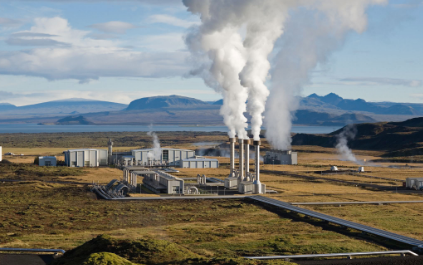

Kenya faces depressing power future even as the country boasts of several power sources ranging from solar, geothermal, and wind, among other energy sources.
Information attributed to the
Kenya Power and Lighting Company (KPLC) indicates that electricity demand
increased over the last two years, way ahead of the installed capacity for
supply-while the country has increased the capacity of the national grid, consumption
has doubled over the same period, with no plans to deal with the situation soon.
While attracting foreign investment in the energy sector has been a recurring theme in the country, the gap between ambition and action remains big as seen in the monopoly status of KPLC, inertia by policymakers to review the place of power purchasing agreements from independent power producers and the energy sector opening on sharing data to enable data-based planning.
The absence of clear directives and
easily accessible data suggests a system lacking values and one where business
thrives only through connections.
With an energy generation mix
that is 80% renewable, Kenya should be a leader on the global energy stage, exporting
more than it imports and positioning itself as a major player in the energy
market. Yet, this industry, with all its potential, remains inaccessible to
many.
Universal access to clean, reliable,
modern, affordable and sustainable energy in Kenya has been bogged down by corruption
in the sector, secret negotiation of power purchase agreements, non-disclosure
of electricity price per unit kilo watt hour, low voltage and blackouts.
My experience with the energy
sectors in Canada and Kenya reveals a stark contrast in the flow of
information, transparency and public trust. In Canada, the Department of
Environment and Natural Resources and the Independent Electricity System
Operator (IESO) in Ontario maintain open, accessible websites with detailed, easily
navigable information on energy prices, incentives, regulatory policies, and
sustainability goals.
In Canada, it is straightforward to find information on specific costs, resource allocations and legislative frameworks through public databases and official websites.
For example, IESO’s website provides real-time data on electricity prices, grid updates, renewable energy targets and conservation demand management initiatives.
This kind of
transparency builds public trust and facilitates foreign and domestic
investments by reducing the friction caused by information scarcity.
KPLC’s lack of transparency starkly contrasts with Canada’s IESO. While IESO routinely publishes data on its power generation costs, partnerships and consumer demand management strategies, KPLC has historically been opaque about these areas.
The public has no clear understanding of the debt repayment obligations tied to Kenya's energy imports or the precise financial terms KPLC has with Independent Power Producers (IPPs). Information related to carbon credits, climate goals and power sector opportunities, such as solar farms or biogas plants, remains limited or inaccessible.
This lack of accessible data discourages many from entering
Kenya’s energy market, which has immense potential but is hindered by
bureaucratic red tape and secrecy.
Furthermore, KPLC’s electricity billing model is often convoluted, with vague explanations that attribute high prices to external factors like fluctuating oil prices or geopolitical tensions.
A more transparent approach, one that breaks down the influence of debt obligations, fuel costs and operational inefficiencies on consumer billing, would not only clarify billing details but also allow citizens to understand the structural challenges the sector faces.
Kenya’s electricity grid, heavily dependent on renewable sources, could greatly benefit from such transparency, as it would encourage more efficient usage and innovative contributions to the industry. KPLC’s website lacks essential data, such as real-time electricity pricing, specific energy agreements and detailed billing breakdowns.
Instead, the content often focuses on past events and general
educational information rather than the actionable insights potential investors
or even informed citizens require.
In Ontario, energy conservation programs, net metering policies and incentives for renewable installations are clearly outlined. Any business or individual interested in contributing to the grid through renewable projects can easily access these resources.
However, in Kenya, details on similar programs are hard to find, and even obtaining approval for private renewable projects like photovoltaic farms or small biogas plants can require extensive discussions and approvals from high-level officials.
Clear, readily available guidelines on such processes would help
potential investors and innovators support Kenya’s energy transition without
unnecessary hurdles.
KPLC should openly disclose its dealings, from the prices it pays to independent power producers to the terms it offers small energy producers for selling excess electricity back to the national grid. Rural electrification should not require bribes to reach marginalized communities.
Public transparency should be the standard—not
something achieved only through parliamentary inquiries.
As Kenya strives to attract
investments and boost its energy sector, a transparent information-sharing
approach, akin to that of Canada, is crucial.
Endrian Lupia is a Postgraduate
student in Energy Management at Algonquin College Ottawa


 © The Star 2024. All rights reserved
© The Star 2024. All rights reserved